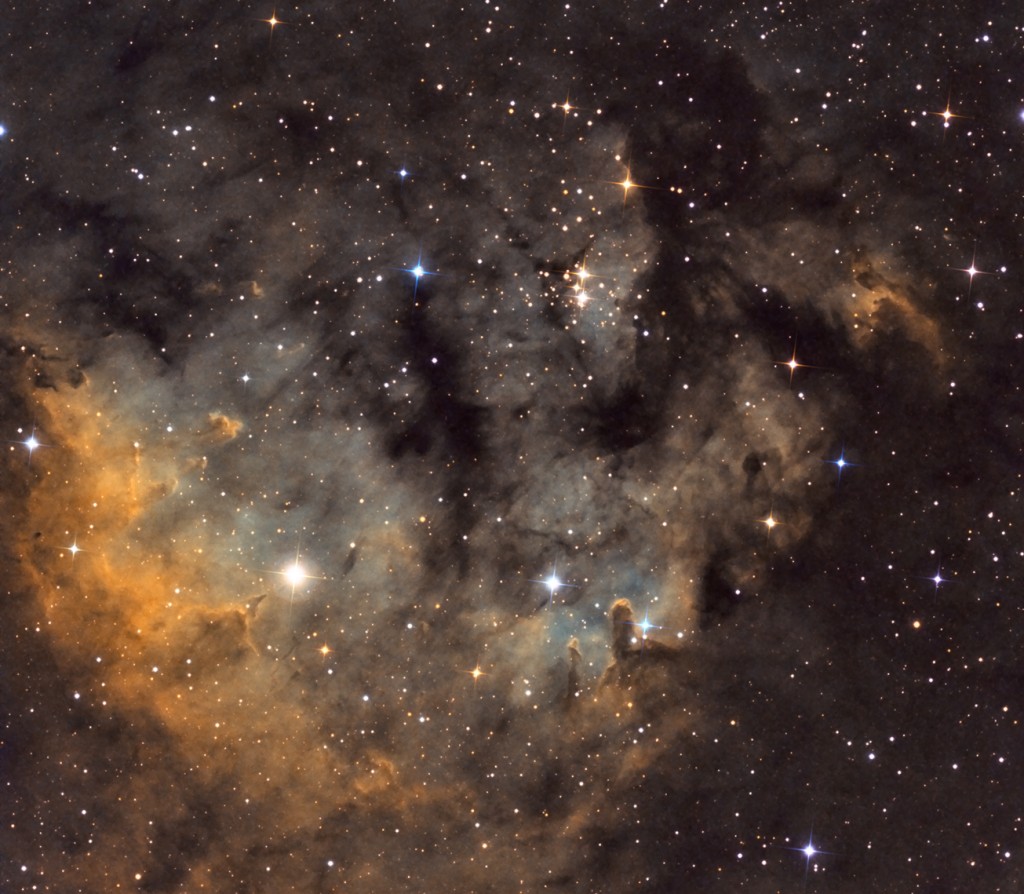
NGC 7822 Stellarvue SVQ100 Apogee Ascent A694 Atlas EQ-G Mount Baader Narrowband Filters SX-OAG w/ Lodestar Autoguider Imaged from Clinton, TN Area
It ended up being a gorgeous night at Norris. The MW was clearly visible and seeing looked reasonably good just based on the naked eye twinkle criteria.
I was able to gather a paltry 3x20min of O[III] and 2x20min of S[II] data on M8 (The Lagoon Nebula) to complete a tricolor Hubble Pallet image before it moved behind a tree….
The night started off hazy with a big halo around the 68.5% illuminated waxing moon. I wasn’t that optimistic about the high thin stuff clearing out so I threw the Lumenera monochrome high frame rate planetary camera on the scope instead of the usual deep sky camera and trained the scope on the moon for the public. I added a wireless game-pad so they could drive the mount around and check out different parts of the moon on their own and hopefully add to their enjoyment. After most of the guests had left I took a few videos and stacked them. Unfortunately, the laptop is not setup for planetary imaging; hard drive space is very limited on the small SSD and I had to move each AVI to a flash drive as I took them…
Luckily, it cleared up and the high thin stuff dissipated. I grabbed the deep sky camera and got to work on M16, The Eagle Nebuka, in Sagittarius.
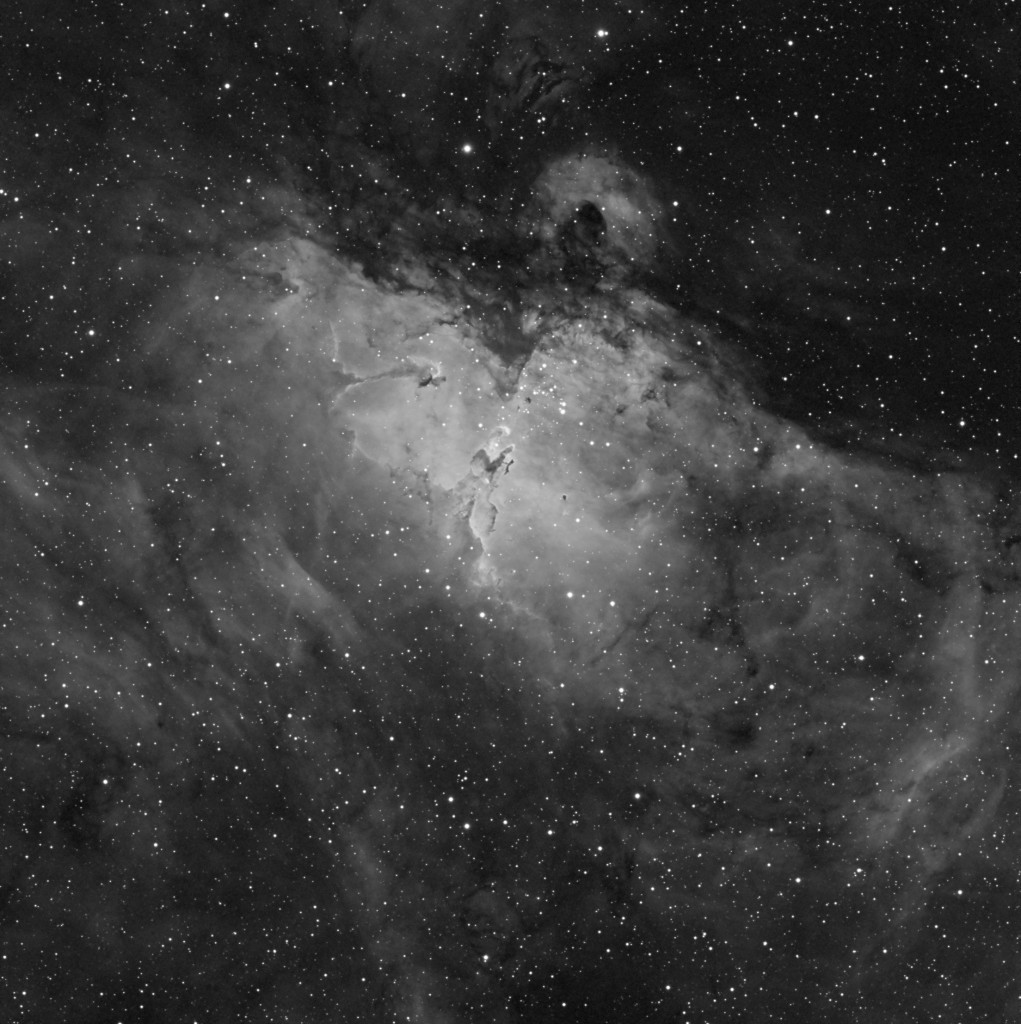
M16 – The Eagle Nebula
Taken with a Stellarvue SVQ100, Apogee Ascent A694, Atlas EQ-G Mount, Baader 7nm Ha Filter. Exposure time 8x20min.
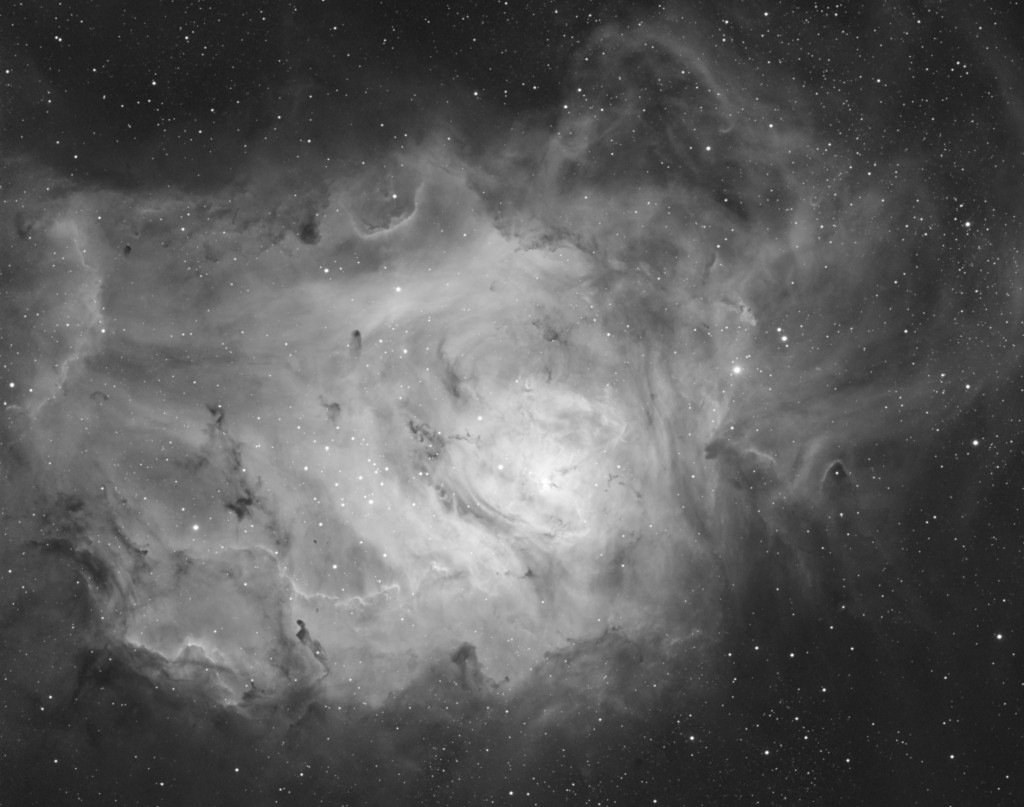
M8 – The Lagoon
Atlas EQ-G
Stellarvue SVQ100, Apogee Ascent A694
8x20min through a Baader Ha 7nm filter.
The Lagoon Nebula (catalogued as Messier 8 or M8, and as NGC 6523) is a giant interstellar cloud in the constellation Sagittarius. It is classified as an emission nebula and as a H II region.
The Lagoon Nebula was discovered by Giovanni Hodierna before 1654[4] and is one of only two star-forming nebulae faintly visible to the naked eye from mid-northern latitudes. Seen with binoculars, it appears as a distinct oval cloudlike patch with a definite core. In the foreground is the open cluster NGC 6530.
From Wikipedia, the free encyclopedia
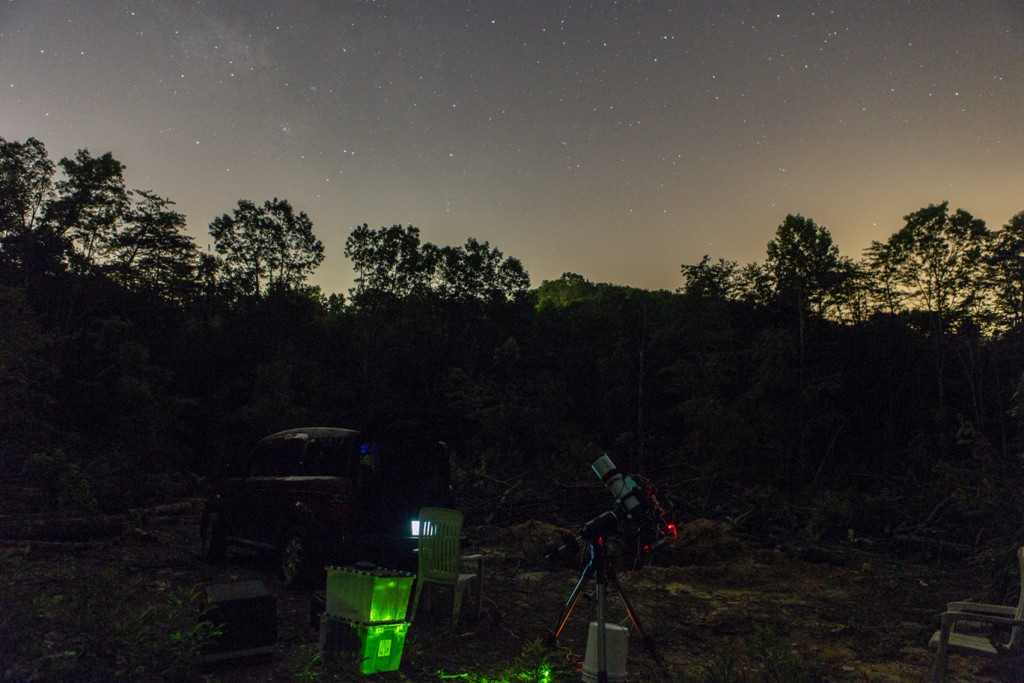
Future home observatory site looking south. The faint open cluster appearing on the left is M7 in Scorpius. Taken with a Canon 6D and 24-70mm f/2.8 at 24mm and f/4 for 20 sec at 1600 ISO.
Conditions were decent up until some clouds rolled in around 3:00am. There was a lot of lightning flashing to the north so I packed up a little early and headed back to the house. SQM measurements started around 20.2 but improved to 20.4 with a max of 20.5 around 1:00am.
The light pollution domes seen in the image are Oak Ridge to the south west (right side) and Clinton to the east/south east (left side).
I’ve temporarily pulled the portable (read small) rig out onto my back patio by the pool which has a narrow window allowing imaging of the southern sky. Since the move to TN I haven’t had a lot of time to do any astronomical imaging but the bug to get out do some imaging finally got to me.
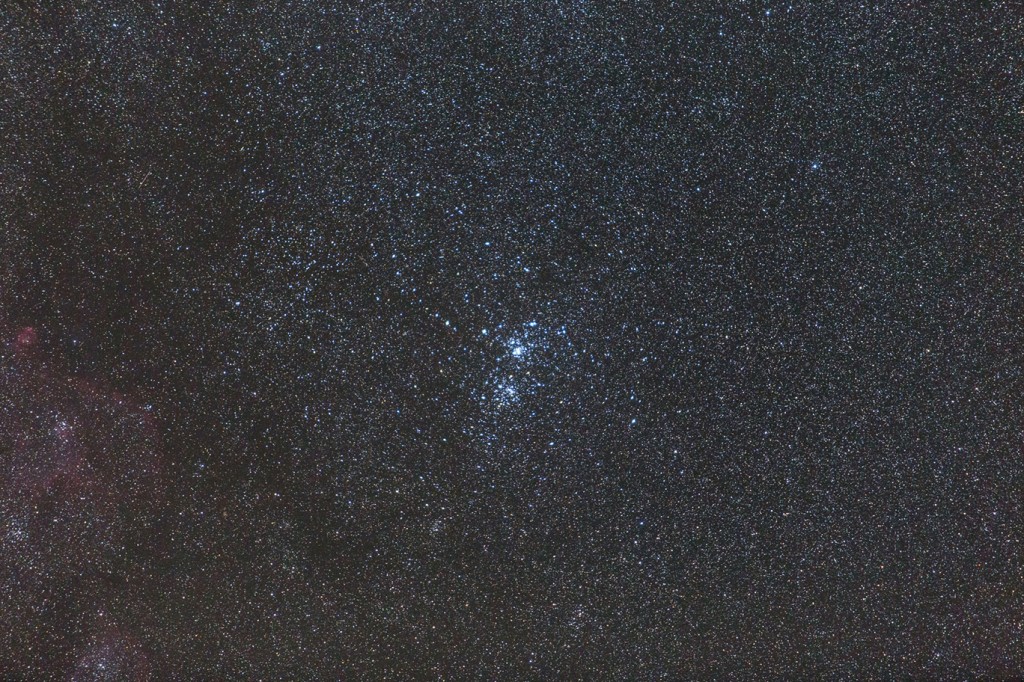
The Double Cluster – Caldwell 14 Open Clusters NGC 869 & 884 Canon 6D, ISO 1600, 60 seconds Canon 70-200 f/2.8 @ f/2.8 Tracking on Atlas EQ-G Cherry Springs Dark Sky Park, PA
A widefield shot of the famous Double Cluster from Sept 17th 2014 at Cherry Springs State Park. The Double Cluster is in Perseus but is in close proximity to Cassiopeia.
I purchased one of the first Apogee Ascent A694 Cameras (Sony ICX694 Chip) before the acquisition by Andor and had some random horizontal banding across the top of the frame that was not possible to calibrate out:
Andor issued an RMA and took care of the costs under warranty. They stated that they repaired the camera by replacing the whole electronics board.
I was hoping to not see the random horizontal bands again but upon firing up the camera and cooling down to -15C there were still there although they are now contained in a smaller region closer to the top of the frame. It still moves around so calibration is difficult if not impossible. When using a small number of frames it is hard to statistically reject the band. You can see below in M42, reproduced at 50% size, that a bright band stands out across the top of the bias and dark calibrated image even after calibration. This is especially obvious in narrowband images where the background pixel count isn’t much higher than the bias floor. The band is also visible across the bottom of the Horse Head shot (I flipped the image) although it doesn’t stand out quite as much.
For a low bias noise camera geared towards narrowband imaging that I plan to use for portable imaging (lower frame count) I don’t think that my options are too great:
I am also including 100% size images of the bias, master bias, dark, and master darks used to calibration the two trial images.
Here is what several bias frames look like animated to give you an idea how the horizontal banding moves around and therefore is not well calibrated:
This is certainly better than what it was before but I am still left with these bands appearing faintly in my images.
All images were captured with the CCD cooled to -15C. They were captured with MaximDL 5 and calibrated / processed in Pixinsight.